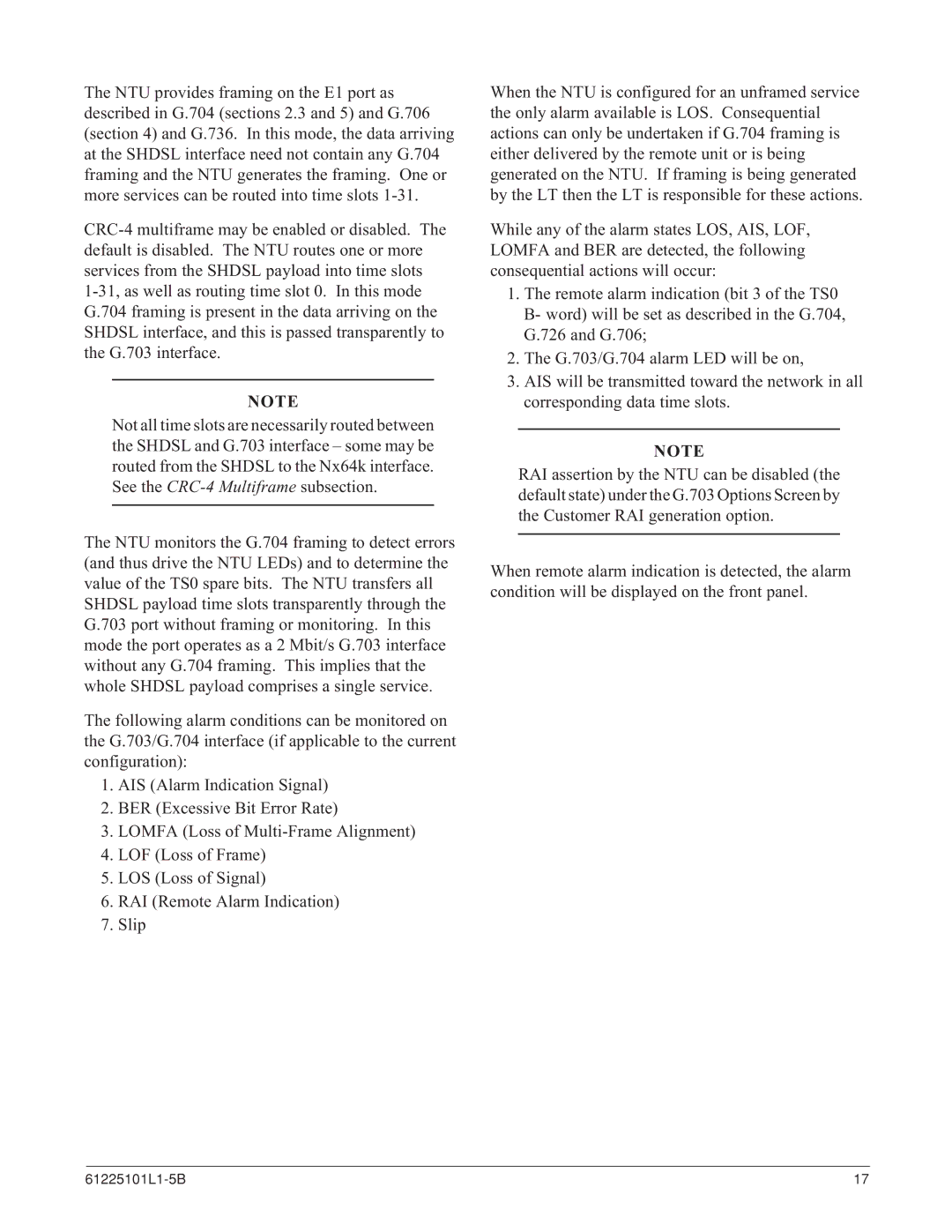
The NTU provides framing on the E1 port as described in G.704 (sections 2.3 and 5) and G.706 (section 4) and G.736. In this mode, the data arriving at the SHDSL interface need not contain any G.704 framing and the NTU generates the framing. One or more services can be routed into time slots
NOTE
Not all time slots are necessarily routed between the SHDSL and G.703 interface – some may be routed from the SHDSL to the Nx64k interface. See the
The NTU monitors the G.704 framing to detect errors (and thus drive the NTU LEDs) and to determine the value of the TS0 spare bits. The NTU transfers all SHDSL payload time slots transparently through the G.703 port without framing or monitoring. In this mode the port operates as a 2 Mbit/s G.703 interface without any G.704 framing. This implies that the whole SHDSL payload comprises a single service.
The following alarm conditions can be monitored on the G.703/G.704 interface (if applicable to the current configuration):
1.AIS (Alarm Indication Signal)
2.BER (Excessive Bit Error Rate)
3.LOMFA (Loss of
4.LOF (Loss of Frame)
5.LOS (Loss of Signal)
6.RAI (Remote Alarm Indication)
7.Slip
When the NTU is configured for an unframed service the only alarm available is LOS. Consequential actions can only be undertaken if G.704 framing is either delivered by the remote unit or is being generated on the NTU. If framing is being generated by the LT then the LT is responsible for these actions.
While any of the alarm states LOS, AIS, LOF, LOMFA and BER are detected, the following consequential actions will occur:
1.The remote alarm indication (bit 3 of the TS0 B- word) will be set as described in the G.704, G.726 and G.706;
2.The G.703/G.704 alarm LED will be on,
3.AIS will be transmitted toward the network in all corresponding data time slots.
NOTE
RAI assertion by the NTU can be disabled (the default state) under the G.703 Options Screen by the Customer RAI generation option.
When remote alarm indication is detected, the alarm condition will be displayed on the front panel.
| 17 |
